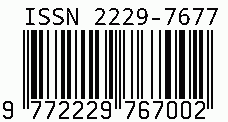
International Journal on Science and Technology
E-ISSN: 2229-7677
•
Impact Factor: 9.88
A Widely Indexed Open Access Peer Reviewed Multidisciplinary Bi-monthly Scholarly International Journal
Plagiarism is checked by the leading plagiarism checker
Call for Paper
Volume 16 Issue 4
October-December 2025
Indexing Partners



















Spatial assessment of plant invasion across the urban protected area of Amchang Wildlife Sanctuary, Assam
| Author(s) | Mr. Avishek Sarkar, Dr. Dhruba Jyoti Das, Dr. Prosanta Hazarika |
|---|---|
| Country | India |
| Abstract | Spread across 78.84 km2 towards the eastern fringe of Guwahati Smart City (26006'N-26013'N & 91050'E-91058'E) in Assam, Amchang Wildlife Sanctuary (AWLS) was notified in 2008 for conservation of Asian Elephant populations. The protected area faces anthropogenic pressure in the form of encroachment, NTFP collection, grazing and invasive alien plant (IAP) spread. Invasion pressure was assessed by undertaking field survey across 200m x 200m quadrats to map occurrence and spread of Ageratum conizoides, Chromolaena odorata, Lantana camara and Mikania micrantha. Spatial analyses with IAP severity as dependent variable and land use/cover, distance from road and distance from PA edge as independent variables yielded a strong and statistically significant positive correlation suggesting strong clustering and heavy localized invasion. Nearly 47% area was found to be invaded by IAPs, with 27% area being severely invaded, 9% highly invaded and 11% moderately invaded. Mikania micrantha was observed to be the most frequently occurring species. The occurrence of all the selected species was found to be positively correlated with canopy openness, being absent in pure patches of Very dense forest, pure Bamboo patches and Sal and Teak dominated areas along the periphery. The study thus identifies severely and highly invaded areas in urgent need of managing IAP populations to increase native fodder plant population, which may decrease instances of Elephant stray-outs. Further research on species specific biocontrol agents can be carried out along the periphery to initiate management of IAP spread along the sanctuary. |
| Keywords | Canopy density, Forest, Guwahati, Invasive species, LULC, Protected area, Ecology |
| Field | Biology |
| Published In | Volume 16, Issue 4, October-December 2025 |
| Published On | 2025-10-12 |
| DOI | https://doi.org/10.71097/IJSAT.v16.i4.8721 |
| Short DOI | https://doi.org/g97s77 |
Share this


CrossRef DOI is assigned to each research paper published in our journal.
IJSAT DOI prefix is
10.71097/IJSAT
Downloads
All research papers published on this website are licensed under Creative Commons Attribution-ShareAlike 4.0 International License, and all rights belong to their respective authors/researchers.

